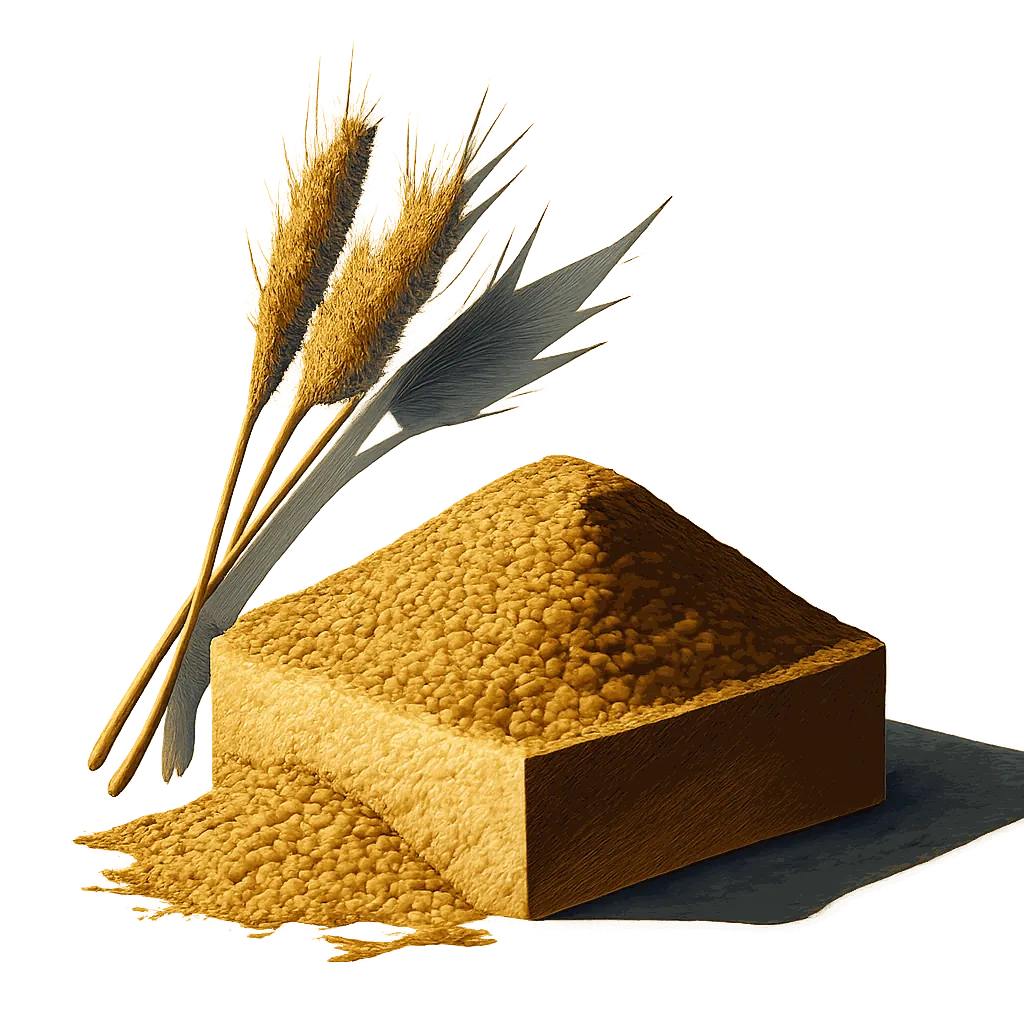Perfect Pairings & Recipes for
Daiginjo Sake

Top flavour pairings and daiginjo sake recipes, revealed through the hidden methmatics of flavour.
Daiginjo sake is marked by the taste of pear and rice, woven with delicate hints of sour apple, melon, and honey that give it remarkable depth. The key to an exceptional harmony lies in appreciating how these elements harmonise and interact.
To map these harmonies, we analysed thousands of ingredients, breaking each one down across 150 flavour dimensions, identifying which notes complement and contrast. Our findings reveal, for instance, how paprika's capsicum tones can infuse with daiginjo sake, or how pistachio's adipose notes create an unexpectedly harmonious bridge with the crisp sweetness.
Flavour Profile Of Daiginjo Sake Across 150 Dimensions Of Flavour
Flavour wheel chart showing the dominant flavour notes of Daiginjo Sake: Pear, Rice, Malic, Honeyed, Melon, Peach, Banana, Lychee, Lactic, Blossom, Plum, Jasmine, Rose, Yeasty, Starch
An ingredient's flavour stems from its core characteristics, such as floral, nectarous, or acidic, combined with layers of subtle flavour notes (outer bars). For a balanced dish, pair ingredients with a variety of core flavours, and choose complementary aroma notes for harmony.
The Secret Language of Flavour
To understand exactly which flavours harmonise, we compiled a database of over 50,000 ingredient pairings commonly used in cooking. We then analysed these pairings, identifying the specific flavour notes that frequently appear together.
The Flavours That Harmonise With Pear Notes
Strength of Association Between Flavours
The flavours most associated with pear notes are: Seaweed, Porcine, Oceanic, Fishy, Saline, Oyster, Proteolytic, Fatty, Glutamic, Lacteal, Buttery, Hazelnut, Petrichor, Resin, Liquorice.
Our analysis reveals a strong connection between pear and animal fat flavours. Since daiginjo sake has a distinct pear-like flavour, try pairing it with the fatty flavours of pistachio.
The recipe below provides inspiration for pairing daiginjo sake with pistachio.
Harmonious Flavours Of Daiginjo Sake
Just as our analysis highlighted that pear and seaweedy notes are commonly paired, we can identify the full profile of flavours that harmonise with each of the flavour accents present in daiginjo sake. For instance, the rice-like notes of daiginjo sake are strongly associated with koji and sesame flavours.
The notes associated with the various aroma notes of daiginjo sake can be seen highlighted in the pink bars below.
Flavour Profile Of Daiginjo Sake And Its Complementary Flavour Notes
Flavour wheel chart showing the dominant flavour notes of Daiginjo Sake: Pear, Rice, Malic, Honeyed, Melon, Peach, Banana, Lychee, Lactic, Blossom, Plum, Jasmine, Rose, Yeasty, Starch
Matching Flavour Profiles
The flavour profile of paprika offers many of the notes complementary to daiginjo sake, including capsicum and peppercorn notes. Because the flavour profile of paprika has many of the of the features that are complementary to daiginjo sake, they are likely to pair very well together.
Prominent Flavour Notes Of Paprika Are Represented By Longer Bars
Flavour wheel chart showing the dominant flavour notes of Paprika: Tomatoey, Capsicum, Caramel, Smoky, Poivre, Honeyed, Hay, Apricot, Charred, Resinous, Raisin, Peach, Pear, Malic, Cherry, Tobacco, Basil, Thyme, Sage, Rosemary, Chlorophyll, Coriander seed, Parsnip, Toasted, Glutamic, Sugary
The chart above shows the unique profile of paprika across 150 dimensions of flavour, while the recipes below offer inspiration for bringing these flavours together with daiginjo sake.
Recipes That Pair Daiginjo Sake With Paprika
Linked Flavour Notes
Looking at the aroma accents that are most strongly associated with the various flavours of daiginjo sake, we can identify other ingredients that are likely to pair well.
Daiginjo Sake's Harmonious Flavours And Complementary Ingredients
Daiginjo Sake's Strongest Flavours
Complementary Flavours
Ingredients with Complementary Flavours
Flavour groups:
Nectarous
Acidic
Floral
Herbal
Spice
Vegetal
Maillard
Earthy
Woody
Carnal
The left side of the chart above highlights the aroma notes of daiginjo sake, along with the complementary aromas associated with each note. While the right side shows some of the ingredients that share many of the accents complementary to daiginjo sake.
Prominent Pairings
Our analysis identifies dishes that pair well with daiginjo sake and highlights the prominent ingredient combinations within these recipes. Key pairs include onion and chilli flakes offering fiery sensation, potato and borlotti bean for starchyness, extra virgin olive oil and bean for starchy depth, and Valpolicella and parsley for a complex hexenal undertone. Explore these combinations to unlock daiginjo sake's hidden complexity, reveal deep nuance, and elevate its vibrant character.
Ingredient Combinations Among Dishes That Pair With Daiginjo Sake
Flavour groups:
Sweet
Sour
Botanic
Herbal
Spice
Vegetal
Earthy
Bitter
How Flavonomics Works
We've pioneered a unique, data-driven approach to decode the intricate art of flavour pairing. Our goal is to move beyond intuition and uncover the science of why certain ingredients harmonise beautifully. This rigorous methodology allows us to provide you with insightful and reliable pairing recommendations.
Our analysis begins with over 50,000 carefully selected recipes from acclaimed chefs like Galton Blackiston, Marcello Tully, and Pierre Lambinon. This premium dataset ensures our model distils genuine culinary excellence and creativity.
Each ingredient from these recipes is deconstructed across 150 distinct flavour dimensions, creating a unique numerical "flavour fingerprint." This quantification allows us to apply advanced analytical methods to identify complex patterns between flavour notes.
We identify popular ingredient combinations that frequently appear in our recipe database. Regression analysis is then performed on these pairings to statistically validate and pinpoint truly harmonious flavours.
These insights drive our predictive model, which allows us to take any ingredient (e.g., Daiginjo Sake), analyse its detailed flavour profile, and accurately reveal its complementary flavours and perfect ingredient partners.
Explore More
Discover more ingredient profiles and expand your culinary knowledge. Each ingredient page offers detailed analysis of flavour profiles, pairing insights, and culinary applications.
The content on our analysis blog is semi-automated. All of the words were manually written by a human, but the content is updated dynamically based on the data.


.webp)